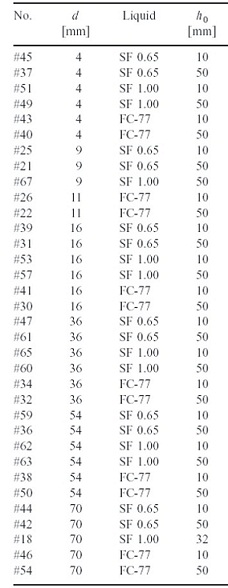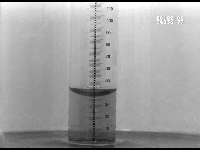microgravity experiments of capillary rise
Capillary-driven flow of a perfectly wetting liquid into circular cylindrical tubes is studied. Based on an analysis of previous approaches, a comprehensive theoretical model is presented which is not limited to certain special cases. This model considers the meniscus reorientation, the dynamic contact angle as well as inertia, convective, and viscous losses inside the tube and the reservoir. The capillary-driven flow is divided into three successive phases where first inertia then convective losses and finally viscous forces counteract the driving capillary force. This leads to an initial meniscus height increase proportional to the square of time followed by a linear dependence and finally the Lucas–Washburn behavior where the meniscus height is proportional to the square root of time. The three phases are separated by two characteristic transition times which are determined by the Ohnesorge number and the inertia of the liquid. Experiments were carried out under microgravity condition in a carefully chosen range of Ohnesorge numbers and initial liquid heights to cover the complete process from the initial meniscus development to the final Lucas–Washburn behavior. Good agreement of experimental and theoretical data is found throughout the complete range of experiment parameters. The existence of all three flow regimes predicted by the theory is verified by the experiments.

The figure below shows a single frame of a drop tower experiment video. The tube's internal diameter is 36 mm. The test liquid is 3M FC-77. A measure is attached to the tube for the evaluation of the liquid height.
Click on the figure to see the video of this experiment.
The video material mentioned in the
paper below is available here
The file names refer to the table
given on the right. The tube diameter is d,
and the initial liquid height in the tube is h_0.
publications
Stange, M., Dreyer, M.E., Rath, H.J.: Capillary Driven Flow in Circular Cylindrical Tubes, Physics of Fluids 15 (2003), pp. 2587-2601.
The funding of the drop tower flights and the funding of the research project by the German Federal Ministry of Education and Research (BMBF) through the German Aerospace Center (DLR) under grant number 50 WM 9443 are gratefully acknowledged.



 "
"